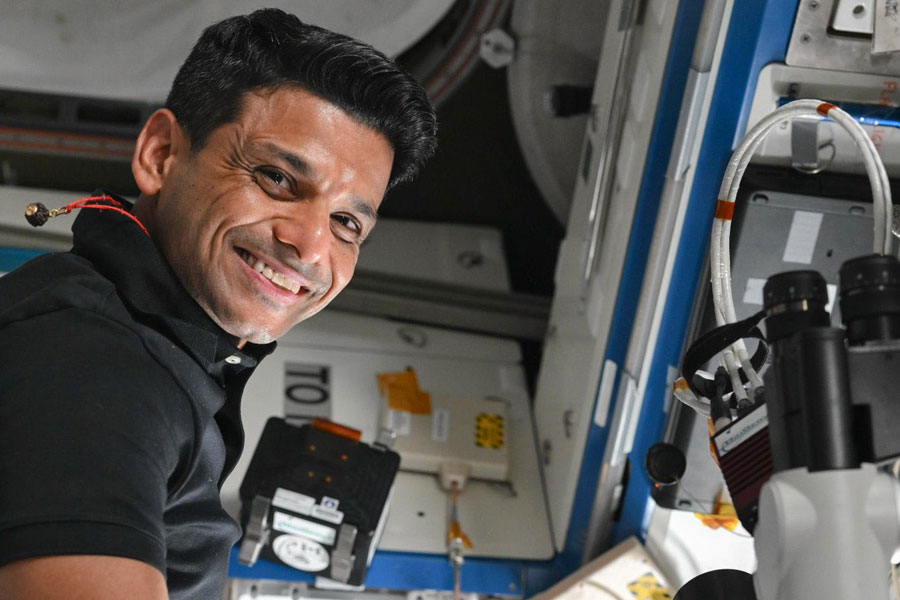
Horticultural Society and a civil
engineer residing in FC Block,
offers guidance on growing a
variety of herbs in pots and
in gardens
In the past few columns we discussed how to choose the right herbs to grow in your garden. You would have to take into account their cultivation requirements, habits, colours, eventual height and spread and the quantity that will be required.
Today I shall explain in detail one such popular herb — the Coriander (Dhania).
It is said that the ancient Greeks believed that Coriander had the odour of bedbugs! Even the Roman scholar Pliny was of the same opinion.
But not all Greeks and Romans were against the Coriander. Hippocrates, the wise doctor after whom the Hippocratic oath has been named, acknowledged that the Coriander had medicinal value.
Scientifically known as Criandurum sativum, the plant is also called Chinese Parsley. It is a fast-growing, bright green annual that reaches a height of approximately 10 to 16 inches with many branches.
The stem is feeble, smooth and light green in colour. The leaves are compound, thin, alternate and easily breakable. On the lower side of the stem, leaves are oval with serrated edges. It has tiny, white or pale purple flowers borne in short-staked clusters with flattened heads.
The Coriander’s seeds are spherical about 3mm in diameter and with some longitudinal ridges. They are green when tender and brownish-yellow when ripe. Their green seeds look like tiny pomegranates.

in Salt Lake.
In India the Coriander was an imported item from West Asia before emperor Akbar introduced its cultivation in Punjab. Today various improved varieties of Coriander are grown almost throughout India.
Climate and soil:- The Coriander is a tropical crop and requires frost-free climate, particularly at the time of flowering and seed formation. Dry and moderately cool climate increases yield as well as quality of the produce.
The plant prefers partially shady conditions in extremely hot climates but otherwise it is highly adaptable. It needs well-drained sandy, loam soil and mulching of the soil is necessary to prevent weed growth. Land retaining manure residue from a crop grown earlier is ideal for growing Coriander.
Growing Method:- This is a winter crop but can be grown in other seasons too. The last week of October is the best time for sowing Coriander. Seeds can be sown directly on the prepared bed, planted in rows. In such a case sowing should be done 30cm apart in lines with a plant-to-plant distance of 10cm. Depending on the climatic condition and moisture retaining capacity of the soil, water the plants evenly and do not let the it dry out.
 Harvesting and storing:- The smaller immature leaves taste better so pick fresh leaves as and when required.
Harvesting and storing:- The smaller immature leaves taste better so pick fresh leaves as and when required.
When seeds turn light grey-brown, cut down the plant. Do this either early in the morning or late in the evening when there is dew so that the seeds do not shatter. Dried seeds should be stored in a sealed jar or packet. They may also be grounded to powder. Leaves may be frozen up to six months.

Uses:- Coriander is used for medicinal, culinary and aromatic purposes. Regular drinking of Coriander water helps lower blood cholesterol. It is also used in treating indigestion, nausea, conjunctivitis, skin disorders etc.
Green Coriander leaves and dried Coriander are both used in Indian cuisine. They are also used for confectionery, flavouring liqueur, sauces and pickles. Sometimes we eat its fresh green leaves between slices of bread and butter.
In case you’re a bird lover and have Budgerigars at home, treat your pets to Coriander. The birds love them, especially their juicy stems. Old timers of Salt Lake would remember the aviary at the BSNL office Island that had lots of Budgerigar. The birds would swoop down on the bird keeper whenever he would enter their cage with a bunch of Corianders.
♦ To be continued
Which herb do you want to learn to grow at home?
Write to The Telegraph Salt Lake, 6, Prafulla Sarkar Street, Calcutta 700001. Email: saltlake@abpmail.com











